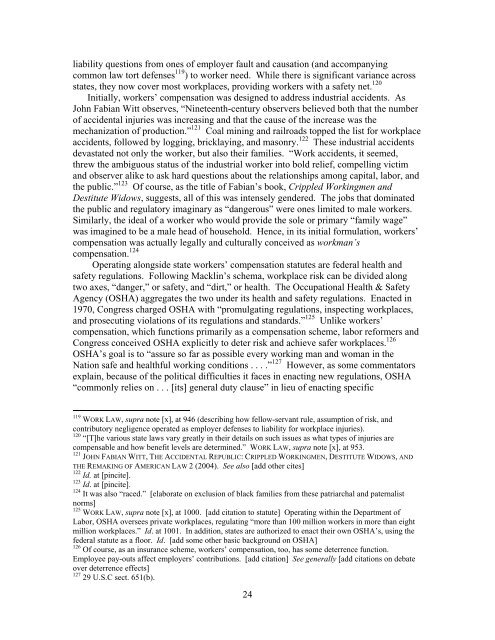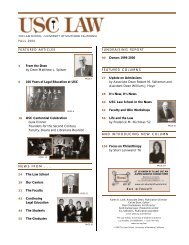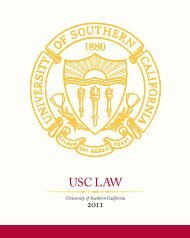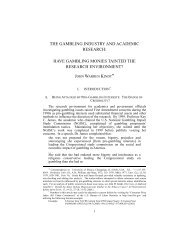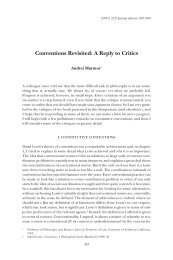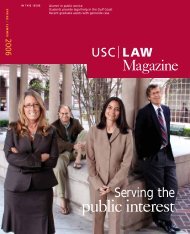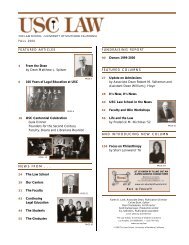1 Regulating Sex Work Adrienne D. Davis VERY ROUGH DRAFT ...
1 Regulating Sex Work Adrienne D. Davis VERY ROUGH DRAFT ...
1 Regulating Sex Work Adrienne D. Davis VERY ROUGH DRAFT ...
You also want an ePaper? Increase the reach of your titles
YUMPU automatically turns print PDFs into web optimized ePapers that Google loves.
liability questions from ones of employer fault and causation (and accompanying<br />
common law tort defenses 119 ) to worker need. While there is significant variance across<br />
states, they now cover most workplaces, providing workers with a safety net. 120<br />
Initially, workers’ compensation was designed to address industrial accidents. As<br />
John Fabian Witt observes, “Nineteenth-century observers believed both that the number<br />
of accidental injuries was increasing and that the cause of the increase was the<br />
mechanization of production.” 121 Coal mining and railroads topped the list for workplace<br />
accidents, followed by logging, bricklaying, and masonry. 122 These industrial accidents<br />
devastated not only the worker, but also their families. “<strong>Work</strong> accidents, it seemed,<br />
threw the ambiguous status of the industrial worker into bold relief, compelling victim<br />
and observer alike to ask hard questions about the relationships among capital, labor, and<br />
the public.” 123 Of course, as the title of Fabian’s book, Crippled <strong>Work</strong>ingmen and<br />
Destitute Widows, suggests, all of this was intensely gendered. The jobs that dominated<br />
the public and regulatory imaginary as “dangerous” were ones limited to male workers.<br />
Similarly, the ideal of a worker who would provide the sole or primary “family wage”<br />
was imagined to be a male head of household. Hence, in its initial formulation, workers’<br />
compensation was actually legally and culturally conceived as workman’s<br />
compensation. 124<br />
Operating alongside state workers’ compensation statutes are federal health and<br />
safety regulations. Following Macklin’s schema, workplace risk can be divided along<br />
two axes, “danger,” or safety, and “dirt,” or health. The Occupational Health & Safety<br />
Agency (OSHA) aggregates the two under its health and safety regulations. Enacted in<br />
1970, Congress charged OSHA with “promulgating regulations, inspecting workplaces,<br />
and prosecuting violations of its regulations and standards.” 125 Unlike workers’<br />
compensation, which functions primarily as a compensation scheme, labor reformers and<br />
Congress conceived OSHA explicitly to deter risk and achieve safer workplaces. 126<br />
OSHA’s goal is to “assure so far as possible every working man and woman in the<br />
Nation safe and healthful working conditions . . . .” 127 However, as some commentators<br />
explain, because of the political difficulties it faces in enacting new regulations, OSHA<br />
“commonly relies on . . . [its] general duty clause” in lieu of enacting specific<br />
119 WORK LAW, supra note [x], at 946 (describing how fellow-servant rule, assumption of risk, and<br />
contributory negligence operated as employer defenses to liability for workplace injuries).<br />
120 “[T]he various state laws vary greatly in their details on such issues as what types of injuries are<br />
compensable and how benefit levels are determined.” WORK LAW, supra note [x], at 953.<br />
121 JOHN FABIAN WITT, THE ACCIDENTAL REPUBLIC: CRIPPLED WORKINGMEN, DESTITUTE WIDOWS, AND<br />
THE REMAKING OF AMERICAN LAW 2 (2004). See also [add other cites]<br />
122 Id. at [pincite].<br />
123 Id. at [pincite].<br />
124 It was also “raced.” [elaborate on exclusion of black families from these patriarchal and paternalist<br />
norms]<br />
125 WORK LAW, supra note [x], at 1000. [add citation to statute] Operating within the Department of<br />
Labor, OSHA oversees private workplaces, regulating “more than 100 million workers in more than eight<br />
million workplaces.” Id. at 1001. In addition, states are authorized to enact their own OSHA’s, using the<br />
federal statute as a floor. Id. [add some other basic background on OSHA]<br />
126 Of course, as an insurance scheme, workers’ compensation, too, has some deterrence function.<br />
Employee pay-outs affect employers’ contributions. [add citation] See generally [add citations on debate<br />
over deterrence effects]<br />
127 29 U.S.C sect. 651(b).<br />
24


